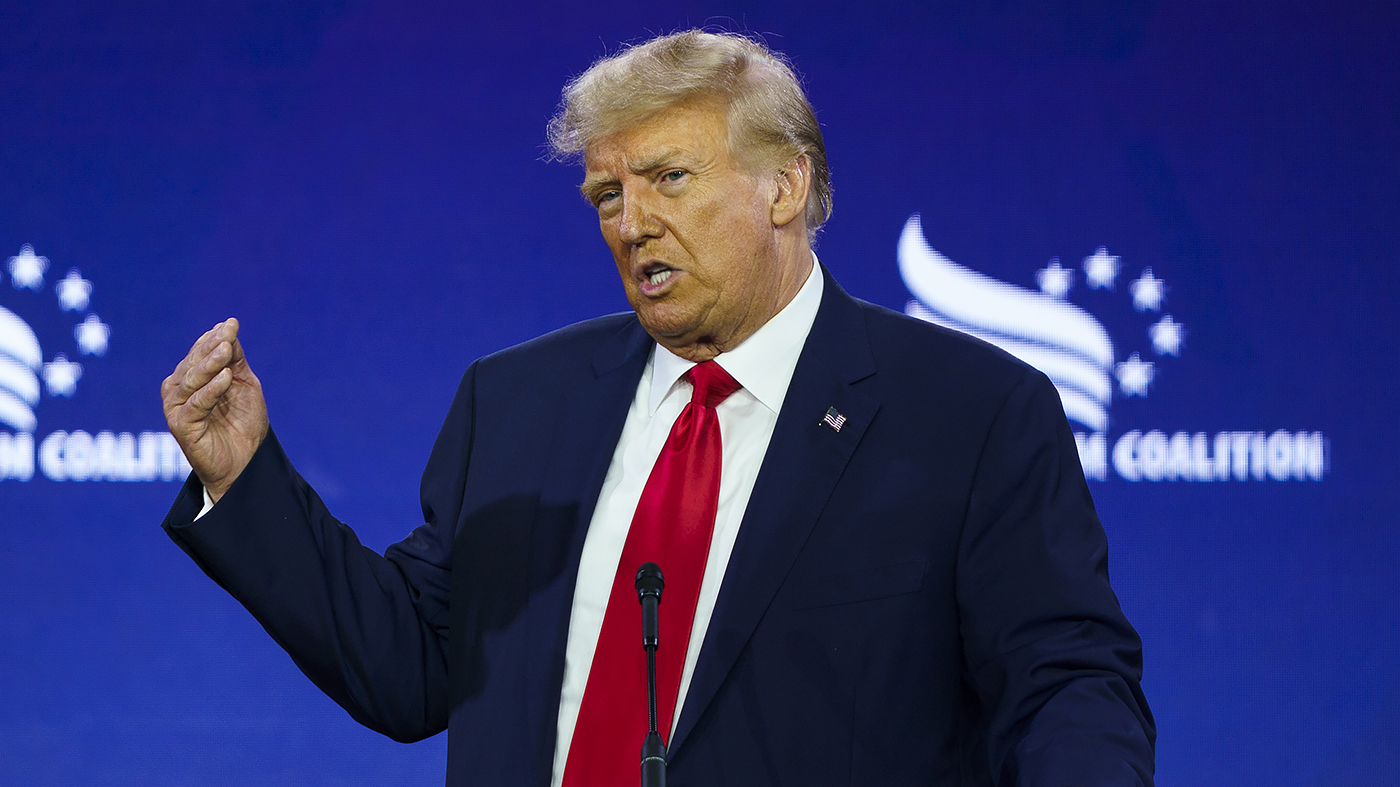One of Donald Trump’s more notorious habits is to hype public-opinion findings he likes while demonizing those he doesn’t like. Maggie Haberman of the New York Times put her finger on the phenomenon on the eve of the 2020 presidential election:
When President Trump talks about polling, his focus is very much on survey-takers that he thinks are good for him. Polls that show him trailing Joseph R. Biden Jr. — virtually all national polls — are simply “fake news.”
The president’s blinkered view has created something of an alternate universe, one not governed by polling averages or independent analysis but by declarative statements that, at times, feel as if they are coming out of nowhere.
As it happens, the polling averages did underestimate Trump’s 2020 performance — but only by degree, not in their overall prediction that Biden would win. This simply reinforced the MAGA tendency to accept only those polls with a decided Republican slant (such as Trump’s favorite, Rasmussen Reports, or Trafalgar Group). When some of those same polls turned out to be overestimating Republican performance in 2022, more objective observers began to wonder whether the polling stars of 2020 had just gotten lucky that year and then continued to put their thumb on the scale for the GOP.
The polling-quality debate is now spilling over into early measurements of the unfolding 2024 Republican presidential-nominating contest. New York Times public-opinion wizard Nate Cohn is seeing a pattern that could represent artificial polling hype for Trump and potentially bad news for the ex-president’s comeback attempt:
At the onset of the Republican campaign, the polls are exceptionally divided on Mr. Trump’s support among Republican primary voters.
In national surveys since last November’s midterm election, different pollsters have shown him with anywhere between 25 percent and 55 percent of the vote in a multicandidate field.
… Whether Mr. Trump is at 25 percent or 55 percent is no small matter. Believe it or not, early polling is fairly predictive of the eventual outcome in presidential primaries. It also has real-world consequences. It affects the decision-making of potential candidates, operatives and activists, many of whom have adopted a wait-and-see approach in part because there are so many conflicting signs of Mr. Trump’s strength.
Which polls look bad for Trump 2024? Typically, those with more traditional methodologies, which worked pretty well in 2022. Cohn continues:
Probability sampling is where the respondents are more or less recruited at random, such as by calling random telephone numbers or by sending a mail invitation to random addresses to participate in an online poll. It’s traditionally considered the gold standard in survey research. A nonprobability sample, by contrast, isn’t selected at random. It might instead be recruited from banner ads on certain websites.
The five probability samples — from Ipsos, Suffolk, Monmouth, Quinnipiac and Marquette Law (fielded by SSRS) — tend to give Mr. Trump relatively bad news. Ipsos and Monmouth found him trailing Mr. DeSantis with just 25 percent and 26 percent of support in a multicandidate field. Suffolk University and Marquette Law/SSRS found Mr. Trump at just 36 percent and 33 percent in a one-on-one matchup (and did not ask a multicandidate question).
The more consistent and traditionally reliable polls also show a troubling pattern for Trump in state-by-state surveys, Cohn notes:
Nearly every nonpartisan state poll shows him running a few points worse than his performance in the same state in the 2016 primary. Most of those state primaries were held at a time when Mr. Trump’s national support was in the mid-30s, suggesting he sits in that range or a little lower today.
A lot of this data should be taken with a grain of salt since, so far, Trump is the only announced candidate, and some of the polling has involved a one-on-one matchup between Trump and Ron DeSantis that may not materialize. But the best evidence we have is that polling averages that include a lot of dubious polls may overstate Trump’s basic strength among Republican primary voters.
Even if Cohn has it backward and the pro-Trump polls are more accurate, all the variation is troubling. Since most political journalists (very much including myself) rely on polling averages to counteract outlier surveys, this could represent a problem going forward — not just in assessing Trump’s 2024 chances but in the vast array of upcoming primary- and general-election contests.

